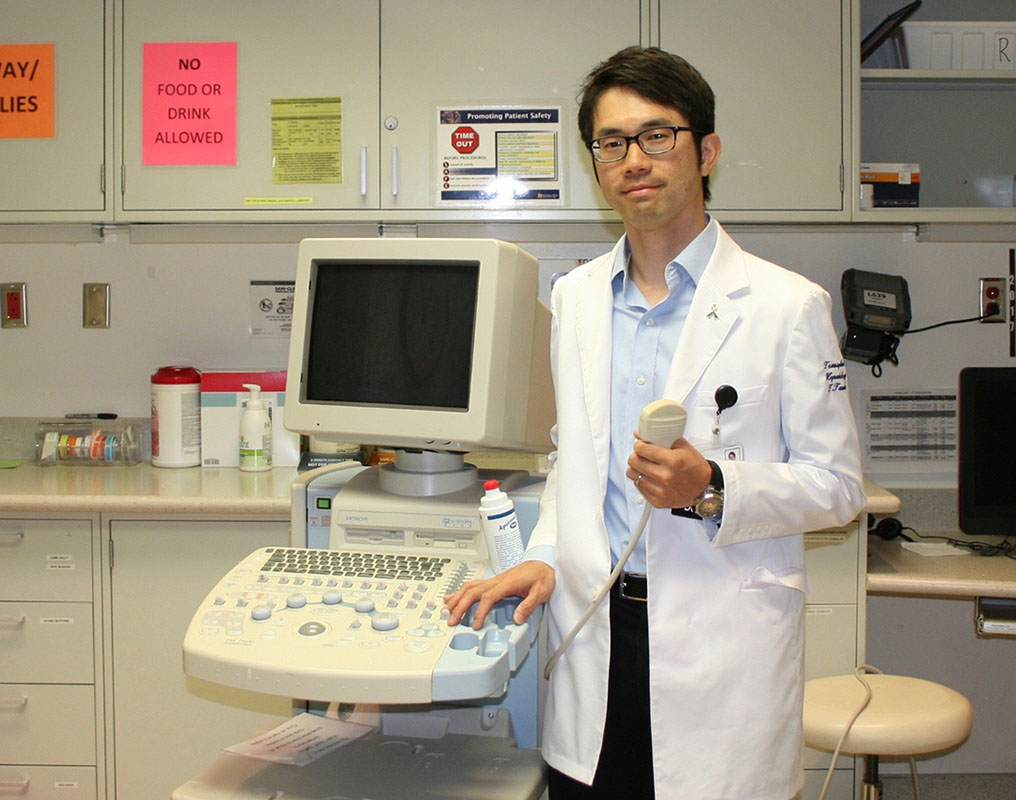 Dr. Tomohiro Tanaka, Clinical Assistant Professor of Gastroenterology and Hepatology, is one of the only GI/Hep clinicians in the United States to offer microwave ablation of liver tumors. This emerging intent-to-cure approach is a less-invasive alternative to traditional liver transplantation or surgical resection of tumors, and is generally offered to patients with small lesions of less than 3 cm and otherwise uncompromised liver function.
Dr. Tomohiro Tanaka, Clinical Assistant Professor of Gastroenterology and Hepatology, is one of the only GI/Hep clinicians in the United States to offer microwave ablation of liver tumors. This emerging intent-to-cure approach is a less-invasive alternative to traditional liver transplantation or surgical resection of tumors, and is generally offered to patients with small lesions of less than 3 cm and otherwise uncompromised liver function.
Patients are placed under general anesthesia and the procedure is performed under CT and ultrasound guidance for real-time probe placement and ablation. The probe emits a high-speed electromagnetic field, heating the tumor to destroy the cancer cells. Patients are usually admitted overnight for observation, and follow-up imaging of the liver by MRI or CT is scheduled 8-12 weeks post-procedure. Further follow-up, including appropriate liver transplant evaluation, is guided by a multidisciplinary oncology team.
 According to retrospective data from Japan, five-year survival after initial tumor ablation is greater than 60%, with recurrence-free survival of approximately 15%. The rate of adverse events is approximately 2.5%.
According to retrospective data from Japan, five-year survival after initial tumor ablation is greater than 60%, with recurrence-free survival of approximately 15%. The rate of adverse events is approximately 2.5%.
Although tumor ablation therapy is often provided by radiologists, Dr. Tanaka believes that this approach is particularly effective in the hands of a hepatologist, so that a “total approach” to liver tumors is undertaken.